03/03/2021
Patents are, of necessity, filed at an early stage in the development of new technology, which means that patent filing trends can provide good insights today’s R&D and tomorrow’s leading technologies.
Climate change targets are a major driver of innovation in today’s world. There is little doubt that innovative solutions are needed across the board if we are to achieve net-zero by 2050, and limit the rise in average global temperate to below 2C, as set out in the Paris Agreement.
Climate change mitigation technologies, however, cut across many fields, and can be difficult to track using traditional technology-specific classification codes. In response, the European Patent Office developed the Y02 classification scheme which allows patents for sustainable technologies to be retrieved quickly and accurately, and allows patent trends in this area to be extracted and analysed. Interpreted correctly, the data affords useful insights into technology trends and competitor activity within the green economy, informing strategic decision making in industry, and allowing for evidence based discussion by policymakers.
The Y02 classification scheme covers all climate change mitigation technologies, with categories for energy generation, transportation, buildings, waste, carbon capture and storage, and smart grids.
In this patent tracker feature, we focus on renewable energy generation. This means solar energy – both thermal and PV, wind energy, geothermal energy, hydro energy, and energy from the sea, e.g., wave energy or salinity gradient.
Charts 1 and 2 show patent applications published in the different renewable energy fields during the 5 years to the end of 2020. Solar PV energy emerges as the clear leader, with the number of patent publications far exceeding those in other areas, representing more than half the total number.
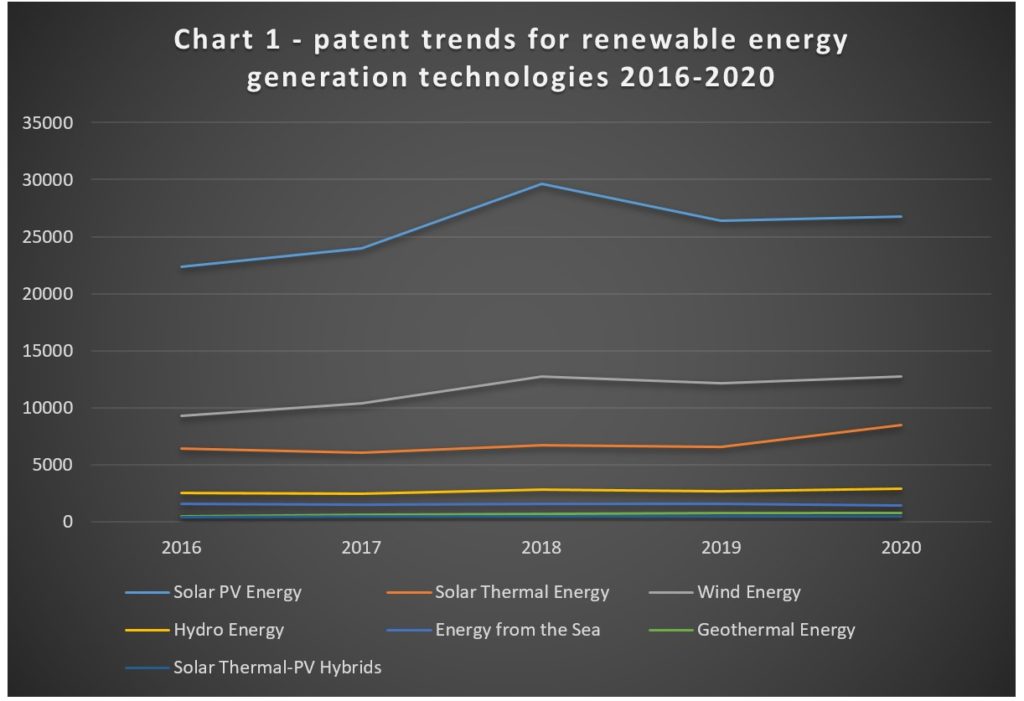
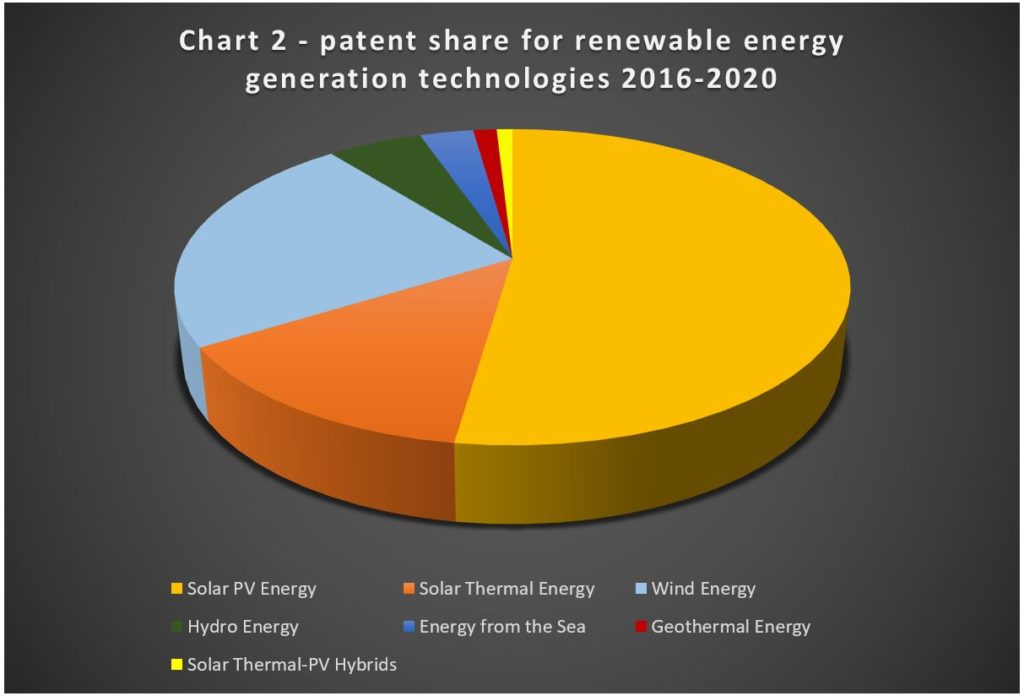
The data for solar PV energy does, however, show a drop in numbers following a peak in 2018. Noting that there is typically an 18 month delay between patent filing and publication, this suggests that patent filing activity in this area peaked during 2016-2017. The trend should not be taken as an indication of any lessening of interest in solar PV energy, but does suggest that that the industry may have reached a mature stage where patent filings have levelled off.
By contrast, wind energy, solar thermal energy and hydro energy all saw their highest ever number of patent publications during 2020, with the upward trend most marked for solar thermal energy, hinting at an increase in innovation in these areas.
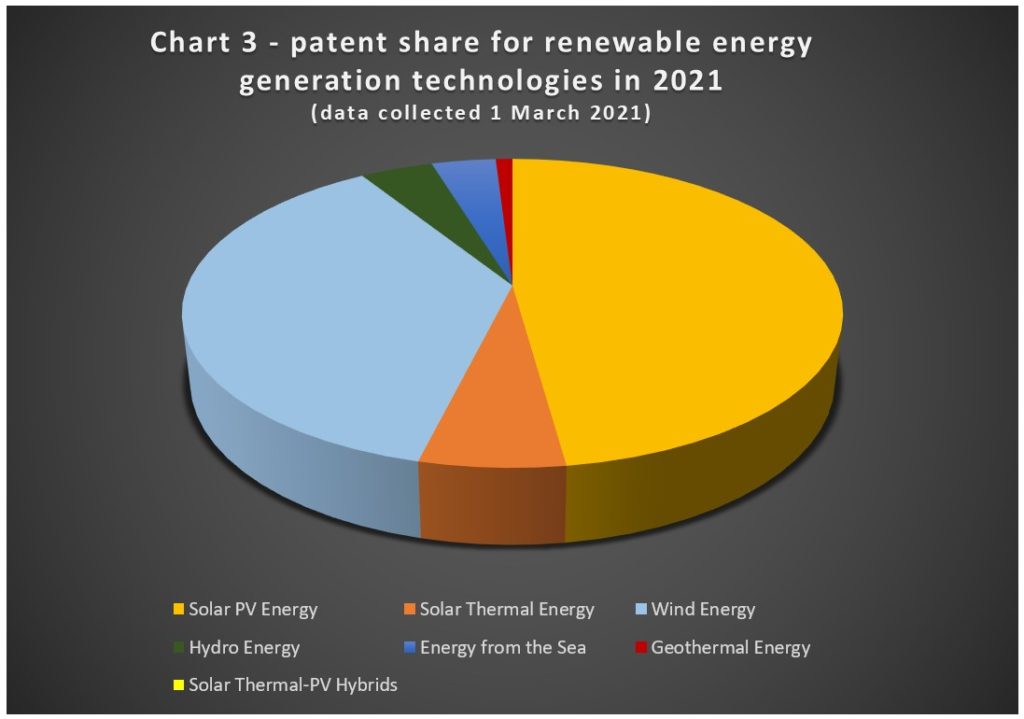
Chart 3 shows the patent publications in the same fields for the first two months of 2021. Even extrapolated to the end of 2021, the figures are lower than we would expect, and it seems likely that there is a delay in figures from some patent offices making their way into the patent databases. As such, it’s too early to meaningfully incorporate these figures into the yearly trends. However, we can still look at relative numbers for a preliminary indication of how the trends might develop. Notably, while solar PV energy is still the leading technology, patent publications in this area drop below 50% of the total for the first time in 5 years, while the share represented by wind energy patent filings has increased from less than a quarter to well over a third. This supports the hypothesis of increased innovation in the wind energy field.
Going against the upward trend seen in 2020, the proportion of patent publications in the solar thermal field has dropped from 16% in 2020, to 6% in 2021. It will be interesting to see how these numbers develop over the rest of the year.
Who are the big patent filers in the renewable energy field?
Chart 4 shows the top 10 filers for the 5 years from the beginning of 2016 to the end of 2020. China’s State Grid are the leaders by a long way. This is unsurprising, and mirrors the significant increase in Chinese originating patent applications seen across all technologies in recent years.
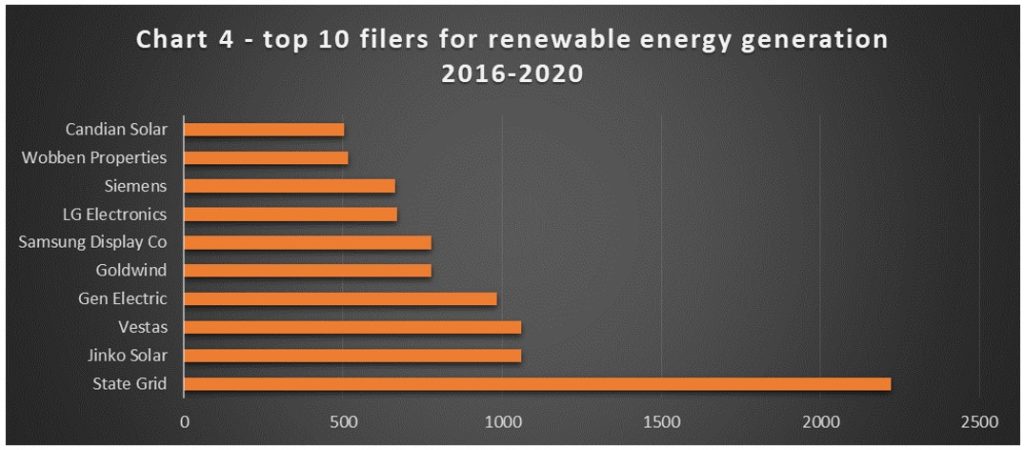
Chart 5 looks at solar PV energy field in particular. Unsurprisingly, given the dominance of solar PV related filings, the top 5 filers here are also seen in the overall top 10. Looking to wind energy in chart 6, however, we see more of a change, with Vestas and Goldwind in the top spots, narrowly ahead of State Grid and General Electric. Notably, Siemens and Siemens Gamesa both make individual appearances in the top 10 filers.
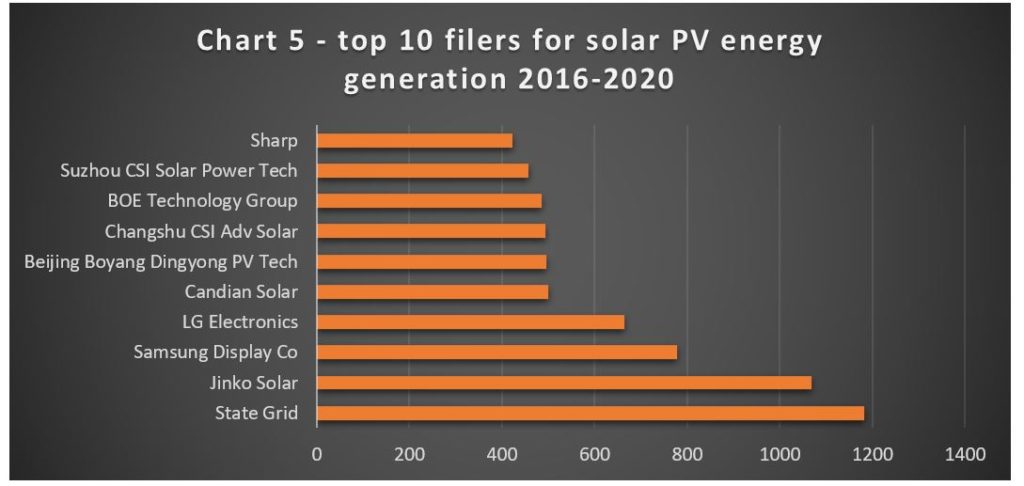

Charts 7 and 8 give us the picture so far for 2021. Again, we have to be careful not to read too much into the data so early in the year, with patent publications for State Grid, for example, notably absent from the figures. Possibly as a result of this, the statistics in the solar PV field do show a number of different companies entering the top 10. In the wind energy field, the 2021 data shows General Electric in the lead, with Wobben in second place, while Siemens and Siemens Gamesa again make individual appearances in the top 10. Vestas remain near the top, and a number of publications also appear in the name of the MHI Vestas joint venture.

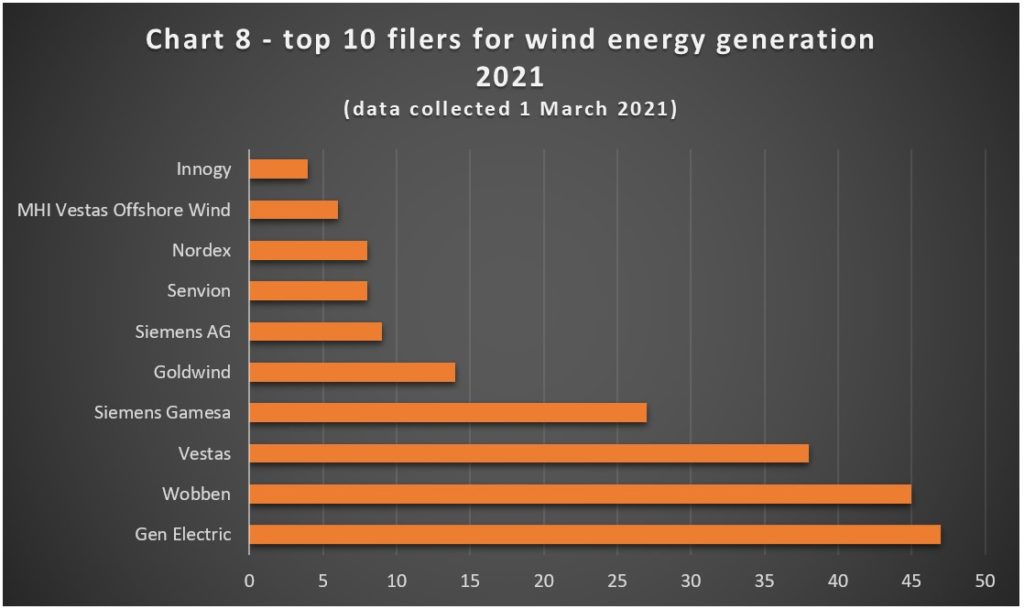
What new technology can we expect in 2021?
Clearly, renewable energy generation is a diverse field, and the patent publications seen so far in 2021 reflect this. However, to give a flavour, we can pick on the top filer under the wind energy classification codes. General Electric’s patents published in January and February 2021 include several cases relating to the manufacture of wind turbine blades and their components, a modular gearbox for a wind turbine, a superconducting magnet for increasing the power and efficiency of a wind turbine, a control system for improving tolerance to grid voltage fluctuations, a DFIG converter, and an additively manufactured tower structure for a wind turbine.
At Reddie & Grose, our experienced multidisciplinary team are well placed to advise on IP strategy, as well as seeking and securing patent protection for diverse climate change mitigation technologies. We plan to make this patent tracker a regular feature. Are there other areas of interest, or areas we could cover in more detail? Please get in contact with your feedback and questions.
This article is for general information only. Its content is not a statement of the law on any subject and does not constitute advice. Please contact Reddie & Grose LLP for advice before taking any action in reliance on it.


